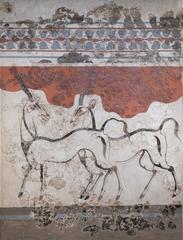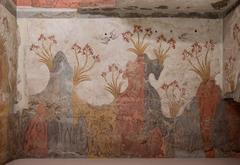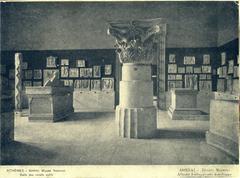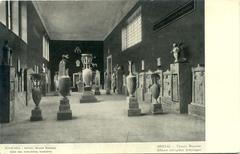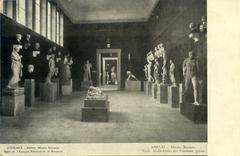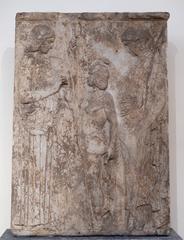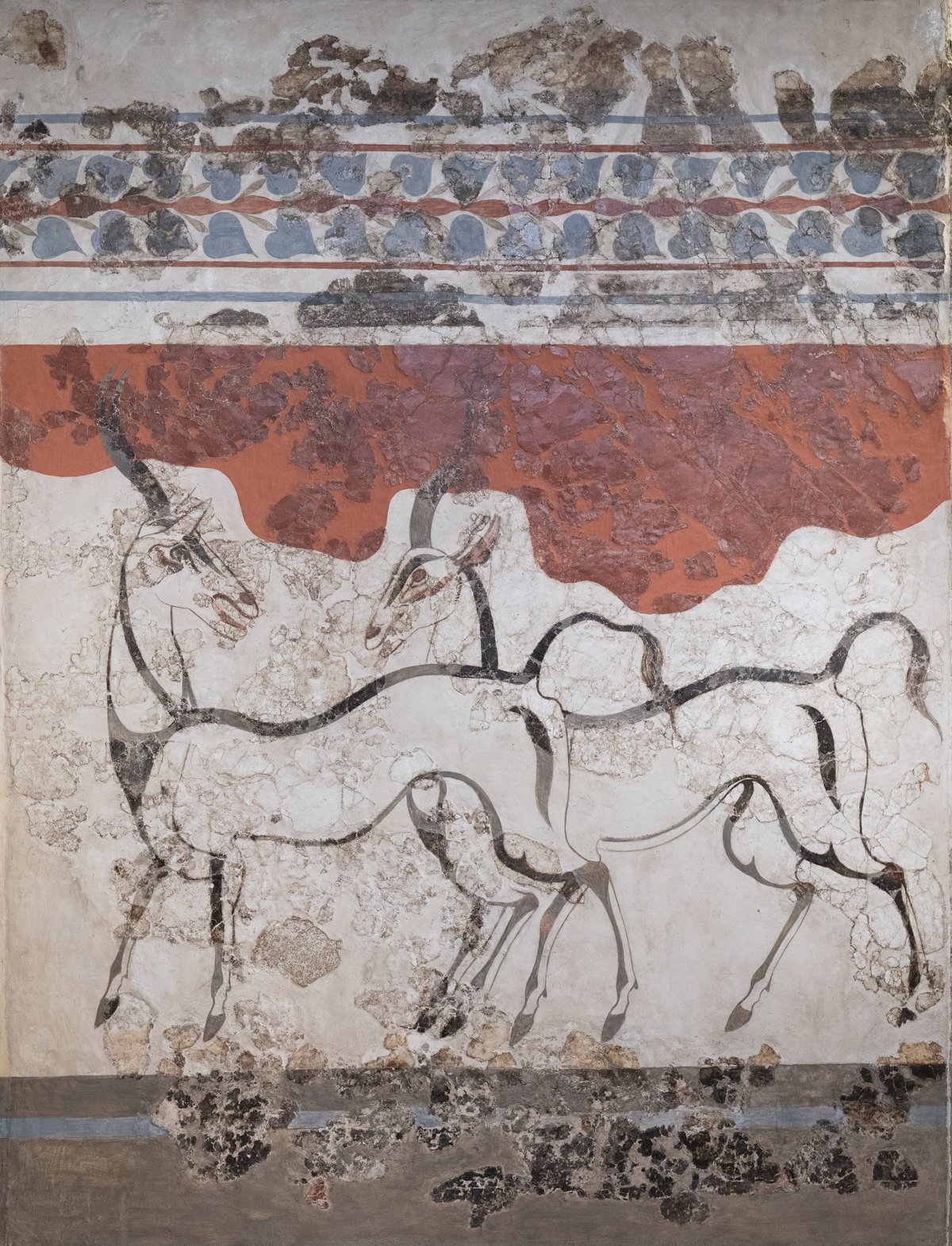
National Archaeological Museum of Athens: Visiting Hours, Tickets, and Historical Significance
Date: 14/06/2025
Introduction
The National Archaeological Museum of Athens (NAM) is Greece’s premier institution for the preservation and celebration of ancient Greek heritage. Established in the 19th century, NAM houses a collection that spans over 7,000 years, offering visitors an immersive journey through the evolution of Greek civilization. Its neoclassical architecture, vast collections, and commitment to scholarship make it a cornerstone of cultural life in Athens and a must-visit for anyone interested in archaeology, history, or art.
Visitors to the museum can expect an array of iconic artifacts, including the Mask of Agamemnon, the Antikythera Mechanism (the world’s first analog computer), and the renowned bronze statue of either Zeus or Poseidon from Artemision. NAM is recognized not only for its comprehensive displays—covering Prehistoric Antiquities, Sculpture, Vase and Pottery, Metalworking, and Egyptian and Near Eastern artifacts—but also for its pivotal role in education, conservation, and international cultural exchanges. Facilities such as wheelchair accessibility, guided tours, interactive media, and a tranquil café garden further enhance the visitor experience.
The museum’s ongoing modernization and expansion, with a major project scheduled for completion by 2028, reflect its vision to become a global cultural landmark. Strategically located in central Athens near Victoria metro station, NAM is easily accessible and well-positioned for visitors to explore Athens’s broader archaeological landscape. For the most up-to-date information on visiting hours, tickets, and special events, consult the official museum website and consider using the Audiala app for personalized tours (Welcome Greece, Greek Reporter, NAM official).
Table of Contents
- Founding and Early History
- Growth and Collections
- Architecture and Modernization
- Legal and Administrative Reforms
- Visiting Hours, Tickets, and Accessibility
- Cultural Significance
- Visual and Interactive Media
- Recent Developments and Future Directions
- Planning Your Visit: Essentials
- Key Collections and Must-See Artifacts
- Facilities and Visitor Tips
- Accessibility and Family Visits
- Guided Tours and Photography
- Nearby Attractions
- Frequently Asked Questions (FAQ)
- References
Founding and Early History
The National Archaeological Museum was established in 1889 during a period of national revival, with the mission to safeguard and exhibit the archaeological treasures of Greece. It began as a central repository for finds from across the Greek mainland and islands, symbolizing the country’s dedication to preserving its ancient legacy (Welcome Greece). The original neoclassical building, designed by Ludwig Lange and completed by Panagis Kalkos, reflects the grandeur and harmony of ancient Greek architecture (Greek Reporter).
Growth and Collections
NAM’s collection quickly expanded through systematic excavations, donations, and targeted acquisitions. Today, it houses more than 20,000 artifacts, organized into five principal sections:
- Prehistoric Antiquities: Neolithic tools, Cycladic marble figurines, Mycenaean treasures including the Mask of Agamemnon, and wall paintings from Akrotiri (Santorini).
- Sculpture Collection: Greek masterpieces from the Archaic to Roman periods, including the Artemision Bronze and the Varvakeion Athena.
- Vase and Pottery Collection: Vessels and ceramics from the Geometric through Hellenistic periods, many depicting mythological scenes.
- Metalworking Collection: Bronze statues, weapons, and the Antikythera Mechanism.
- Egyptian and Near Eastern Antiquities: Artifacts reflecting Greece’s ancient ties with neighboring civilizations (Athens Cabs).
Architecture and Modernization
The museum’s neoclassical structure has been expanded and renovated to meet contemporary museological standards. A major new extension, designed by David Chipperfield Architects and Alexandros N. Tombazis & Associates SA, is underway, adding 20,000 square meters of exhibition space and green areas. This project, scheduled for completion by 2028, will allow more of the museum’s vast collection to be displayed and enhance visitor amenities (Greek Reporter).
Legal and Administrative Reforms
In 2023, the museum was granted greater autonomy from the Ministry of Culture, improving its ability to manage resources, pursue international collaborations, and fundraise independently. This positions NAM as a more dynamic and competitive institution on the global stage (Greek Reporter).
Visiting Hours, Tickets, and Accessibility
Visiting Hours:
- Summer (April–October): Tuesday 13:00–20:00; Wednesday–Monday 08:00–20:00
- Winter (November–March): Tuesday 13:00–20:00; Wednesday–Monday 08:00–17:00
- Closed: Mondays (except summer), major public holidays. Always check the official website for updates.
Tickets:
- Standard admission: €12 (April–October), €6 (November–March)
- Reduced admission: €6 (students, seniors; eligibility details on official site)
- Free admission: Children under 18, EU students, select days (first Sunday of the month, November–March)
- Tickets are available online and at the entrance (NAM official).
Accessibility:
- Step-free access, elevators, ramps, and accessible restrooms throughout
- Free admission for wheelchair users and one escort
- Wheelchair access via a side gate (call ahead if needed)
- Assistance available upon request (This is Athens)
Travel Tips:
- Metro: Victoria station (Line 1) is closest; Omonia station (Lines 1 & 2) is also nearby
- Taxi: 5 minutes from Plaka/Syntagma
- Walking: About 25 minutes from Syntagma Square or Plaka
- Arrive early or late afternoon to avoid crowds, especially in summer (Dave’s Travel Pages)
Cultural Significance
NAM is widely regarded as one of the world’s foremost archaeological museums, providing deep insights into Greek history, art, and society. Its artifacts, such as the Mask of Agamemnon, Antikythera Mechanism, and Artemision Bronze, have become symbols of Greek cultural identity. The museum is also active in repatriation efforts, international research, and cultural exchange, securing its place as a leader in global heritage preservation (historytools.org, wikipedia).
Visual and Interactive Media
Visitors can preview collections through virtual tours and high-quality images on the official website. Interactive maps, multimedia kiosks, and the Audiala app provide deeper engagement on-site. Key exhibits are highlighted in digital guides and are ideal for photography (non-flash only; professional equipment needs permission).
Recent Developments and Future Directions
With more than 500,000 annual visitors, NAM is expanding its reach through digital innovation, community outreach, and major infrastructural improvements. The museum’s vision is to become a more open, “extroverted” institution that embraces both local and global audiences (Greek Reporter).
Planning Your Visit: Essentials
- Best times to visit: Weekday mornings or late afternoons
- Recommended duration: 2–4 hours for highlights, a full day for enthusiasts (Santorini Dave)
- Map and signage: Available in Greek and English; free maps at entrance
- Café and Gift Shop: On-site café with garden seating; shop for books, replicas, and souvenirs
- Cloakroom: Free for bags, backpacks, and umbrellas; large luggage not allowed
- Restrooms: Accessible facilities on all floors
Key Collections and Must-See Artifacts
- Prehistoric Antiquities: Mask of Agamemnon, Cycladic figurines, Akrotiri frescoes
- Sculpture Collection: Zeus or Poseidon of Artemision, Varvakeion Athena, Archaic kore and kouros statues
- Vase and Pottery Collection: Geometric and red-figure vases, intricate miniature works
- Metalworking: Antikythera Mechanism, bronze statues, gold jewelry
- Egyptian and Near Eastern Antiquities: Mummies, amulets, sarcophagi
(Athens Cabs, greece-is.com, The Tour Guy)
Facilities and Visitor Tips
- Photography: Non-flash photography allowed; check restrictions in certain galleries
- Bag Policy: Large bags must be checked at the cloakroom
- Wi-Fi: Free in public areas
- Seating: Available throughout galleries
- COVID-19 Measures: Health protocols may apply; check official website for updates
Accessibility and Family Visits
- Child-Friendly: Interactive exhibits and educational programs during school holidays
- Group Visits: Advance booking for groups of 10+ recommended
- Nearby Amenities: Cafés, restaurants, and shops in Exarcheia and Omonia areas
Guided Tours and Photography
- Audio Guides: Available for rent; some combo tickets include audio tours
- Guided Tours: Offered in multiple languages; advance booking advised
- Photography: Non-flash allowed for personal use; professional photography requires special permission
(Santorini Dave, Archaeology Travel)
Nearby Attractions
- The Acropolis: Athens’s iconic ancient citadel
- Ancient Agora: Marketplace and civic center of ancient Athens
- Byzantine & Christian Museum, Numismatic Museum, Epigraphical Museum: Accessible with combination tickets
- Monastiraki, Omonia Square, and Plaka: Popular neighborhoods for dining and shopping
Frequently Asked Questions (FAQ)
Q: What are the museum’s opening hours?
A: Tuesday 13:00–20:00; Wednesday–Monday 08:00–20:00 (summer); 08:00–17:00 (winter). Closed on select holidays.
Q: How do I buy tickets?
A: Online via the official website or at the entrance.
Q: Is the museum accessible for visitors with disabilities?
A: Yes, with step-free access, elevators, ramps, and accessible restrooms.
Q: Are guided tours available?
A: Yes, in multiple languages—book in advance for private or group tours.
Q: Can I take photographs?
A: Non-flash photography is permitted for personal use.
Q: What is the best time to visit?
A: Early morning or late afternoon on weekdays, especially outside peak summer months.
References
- Welcome Greece
- Greek Reporter
- historytools.org
- wikipedia
- NAM official
- Dave’s Travel Pages
- This is Athens
- Athens Cabs
- greece-is.com
- Santorini Dave
- The Tour Guy
- Archaeology Travel
Final Tips and Call to Action
A visit to the National Archaeological Museum of Athens is an unforgettable exploration of Greece’s ancient legacy. Plan ahead by checking visiting hours and ticket details, booking in advance, and prioritizing must-see collections. Utilize available resources like the Audiala app and the museum’s social media channels for the latest updates and guided experiences. Whether you are a dedicated history enthusiast or a casual traveler, the museum promises a journey through time that will inspire and educate.
For the most current information and to plan your visit, always refer to the National Archaeological Museum’s official website.
